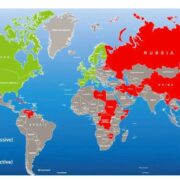Utande, an internet service provider, has announced that it will discontinue its LTE and WiMAX services on January 31, 2026, affecting thousands of subscribers across the country. The decision comes amid rising operational costs and shifts in the competitive telecommunications landscape.
By Ropafadzo Mashawi
Since last year, many customers have relied on Utande’s LTE service, which provided a viable internet option in areas lacking fibre infrastructure. However, the impending discontinuation has left users concerned about their investments, particularly the $400 hardware that will become obsolete.
Utande cited increasing licensing fees and spectrum usage costs as key factors in its decision to exit the LTE market. However, industry observers suggest that the surge of competitors like Starlink, which offers significantly faster internet speeds at competitive prices, has played a crucial role in this shift.
While speeds of 10 Mbps were adequate for some users, Starlink’s offerings of up to 250 Mbps for around $30 per month have drastically altered the market dynamics. As a result, many Utande customers have begun transitioning to Starlink, leading to a decline in LTE subscriptions.
Local ISPs, including Utande, face substantial challenges due to the high costs associated with spectrum-based wireless technology. The advent of affordable satellite internet options has further complicated their ability to compete effectively.
Despite providing reliable service, particularly during load-shedding periods, Utande’s decision aligns with overarching business realities. Maintaining LTE infrastructure and coverage becomes increasingly untenable against competitors with more favorable operating conditions.
In a statement, Utande reassured customers that it will continue to support them through fibre and enterprise Starlink services, although these options may not be accessible or affordable for all users. The company acknowledged the critical role LTE has played in Zimbabwe’s connectivity landscape, serving as an essential link between mobile data and the expanding fibre network.
As the January 2026 deadline approaches, affected users are urged to explore alternative internet options. Subscribers are advised to check for fiber availability in their areas, evaluate Starlink’s service plans, and communicate with their providers about transition support.















Comments